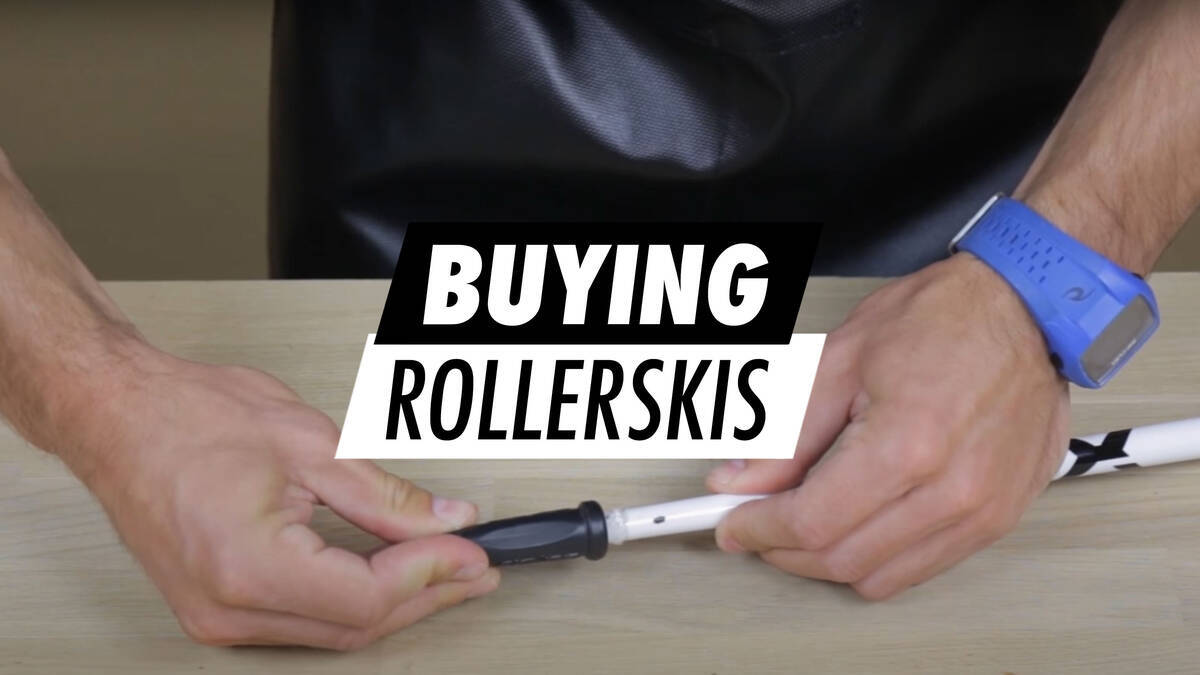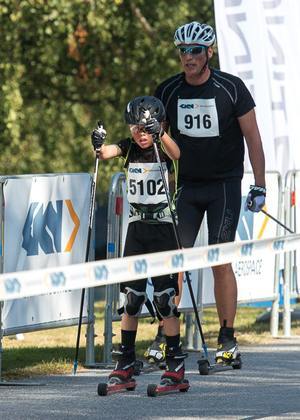Purchasing Roller Skis

There exists a range of styles and models of roller skis, providing an assortment of choices to discover the ideal setup for you. This guide is designed to assist you in selecting new roller ski gear.
Below, learn how to identify the appropriate equipment for your needs.
Frames: What style is your discipline and where is it practised?
Initially, assess your skiing style—do you lean towards classic roller skiing or prefer skating—and consider the type of surface you favour. The answers to these questions are crucial for selecting the roller ski frame. For example, if gravel surfaces appeal to you, low frames are unsuitable. Conversely, high frames will challenge your equilibrium. It's generally advisable to take part in an introductory class if you're new to roller skiing, as it aids in choosing suitable equipment.

Frames are crafted from various materials—aluminium, wood, steel, and carbon—each with its benefits and drawbacks. For example, wood provides greater flexibility and a more authentic skiing experience, while aluminium, being more rigid and lighter, is optimal for competitions due to improved power transfer.
Roller Ski Wheels
In addition to selecting appropriate frames, choosing wheels with the correct hardness is vital when picking roller skis. Some brands provide up to four different wheel hardness options. If your preference is for riding on gravelly roads, opt for softer wheels, while harder wheels suffice for asphalt surfaces. Bear in mind the wheel hardness and the material they're made from when purchasing roller skis. Harder wheels introduce more resistance on smooth asphalt, whereas softer wheels offer an easier roll.
Roller Ski Boots
In terms of roller ski boots, the selection is more extensive than ever. Previously, it was typical to utilise one's winter equipment, but now summer-specific roller ski boots are available. These boots offer the advantage of being less insulated than winter versions, providing more comfort when temperatures rise above 5-8 degrees Celsius.
Roller Ski Poles and Tips
The roller ski market has expanded with poles specifically designed for roller skiing, and significant advancements have been made in areas such as weight and materials.
Select roller ski poles suited to your skill level, ski type, and height. Beginners or intermediates may prefer softer poles for increased comfort and to avoid arm fatigue. Experts, particularly those in competitive races, may opt for stiffer poles (80 - 100% carbon) for enhanced power transfer. Note that stiffer poles are more prone to breaking from impacts, so it's advisable to transport them in a pole bag. Avoid tossing them into vehicles or on the ground to prevent damage.
Your roller ski pole length should match your height and be chosen based on your skiing style (classic or skate).
Classic
Opt for poles approximately 30 cm (12 in) shorter than your height. When measuring, stand with the pole on the ground. Remember, seasoned skiers might have their preferred pole length.
Skate
For skating, poles should be 15 - 20 cm (6-8 in) shorter than your height. Perform the measurement with both feet and the pole on the ground. Remember that experienced skiers might have their preferred pole length.
Rollerski Pole Tips
Some people erroneously assume they can use winter tips for roller skiing. However, compromising here is unwise! Invest in quality pole tips because cheaper options come with softer materials, which wear out quickly during use. Initially, a grindstone will suffice, but eventually, you’ll need replacements.
This video demonstrates how to replace roller ski pole tips:
Grips and Straps
Different options for grips and straps are available for roller ski poles, ensuring easy control. Many grips feature cork surfaces for superior comfort. Straps come in various designs, including Velcro and innovative boa closures.
Over time, grips wear down and need replacement.
View the following video to learn grip replacement:
Additionally, for safety, consider adding reflectors if your poles lack them, to enhance visibility in traffic. Since poles are the most dynamic component when skiing, they're an excellent way to attract attention from vehicles on dark roads or bicycle paths. Many of our poles feature built-in reflectors—learn more on each product page.
It goes without saying, always wear a helmet when roller skiing, as speeds can reach up to 30 km/h.
We hope this guide has pointed you in the right direction and resolved questions about buying roller skis and related accessories. Should you have any remaining queries or uncertainty about which roller skis to select, please feel free to contact us.
